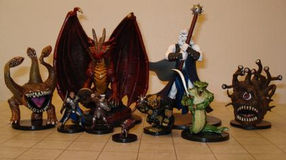The Impact of Clue
- Caity Kelly
- Oct 13, 2017
- 2 min read
“When you read the account of a murder--or, say, a fiction story based on murder--you usually begin with the murder itself. That's all wrong. The murder begins a long time beforehand. A murder is the culmination of a lot of different circumstances, all converging at a given moment at a given point. People are brought into it from different parts of the globe and for unforeseen reasons."
-Agatha Christie, “Towards Zero”

I spent a solid 6 years hosting and writing murder mystery dinners. This time afforded me many valuable experiences—learning through trial and error, freedom to try new themes, and practice with different audiences, just to name a few. Despite the various nuances of this practice, there was always one question that I dreaded hearing: What exactly is it that you do?
Where do I begin? What will they understand? How do I consolidate the lengthy process of writing a story, converting it into a playable format, and creating a physical environment that keeps players’ heads in the game?
These questions plagued me at the beginning of my murder mystery dinner design career. Often, inquirers would walk away looking more confused than they had before receiving my answer. Eventually, however, I found the perfect response. I would answer a question with a question—that question being, “Have you ever played Clue?”
Patented in 1947 by Anthony Pratt, Clue was originally a board game he titled, “Murder.” Its conception came about as a result of Pratt’s adoration for live mystery dinner games. Rather than requiring a room full of costumed party guests and a multi-course dinner, “Murder” was a much more convenient alternative.
By 1949, the game had spread across the United States as well as Great Britain. Its title was changed to “Cluedo” and “Clue” in each respective country.
Nowadays, whenever I am asked for details about writing murder mystery dinners, I respond with a comparison to Clue. Most of the time, the asker immediately knows what I am talking about since it is in a format that is better known to the general public.
It is for this reason that the creation of Clue is a significant moment in the history of writing mystery role-playing games. It uses a mode that is understood by most of the population—a board game.
When considering different varieties of media that can be used for a project, it is vital that we use media that will suit our target audience. Or, in my case, we can use new media to explain old media and vice versa. As I progress as a writer and game designer, it thus becomes abundantly clear to me that considering my audience and mode of choice is a crucial step in the creation process.
If you would like to know more about the history of Clue/Cluedo, check out the link below:
http://thebiggamehunter.com/games-one-by-one/clue-cluedo/


コメント